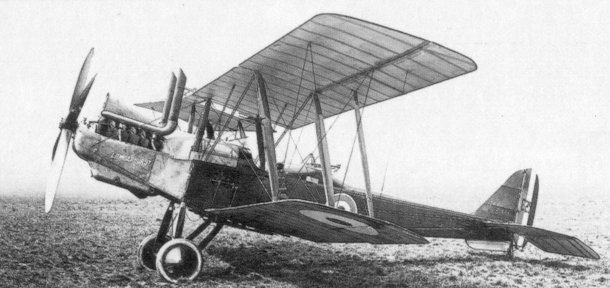Raf 4 on:
[Wikipedia]
[Google]
[Amazon]
The RAF 4 was a British
 * Armstrong Whitworth F.K.8
* Bristol F.2 Fighter
* Royal Aircraft Factory B.E.12
* Royal Aircraft Factory R.E.7
* Royal Aircraft Factory R.E.8
*
* Armstrong Whitworth F.K.8
* Bristol F.2 Fighter
* Royal Aircraft Factory B.E.12
* Royal Aircraft Factory R.E.7
* Royal Aircraft Factory R.E.8
*
air-cooled
Air-cooled engines rely on the circulation of air directly over heat dissipation fins or hot areas of the engine to cool them in order to keep the engine within operating temperatures. In all combustion engines, a great percentage of the heat ge ...
, V12 engine developed for aircraft
An aircraft is a vehicle that is able to flight, fly by gaining support from the Atmosphere of Earth, air. It counters the force of gravity by using either Buoyancy, static lift or by using the Lift (force), dynamic lift of an airfoil, or in ...
use during World War I
World War I (28 July 1914 11 November 1918), often abbreviated as WWI, was List of wars and anthropogenic disasters by death toll, one of the deadliest global conflicts in history. Belligerents included much of Europe, the Russian Empire, ...
. Based on the eight–cylinder RAF 1 it was designed by the Royal Aircraft Factory
Royal may refer to:
People
* Royal (name), a list of people with either the surname or given name
* A member of a royal family
Places United States
* Royal, Arkansas, an unincorporated community
* Royal, Illinois, a village
* Royal, Iowa, a c ...
but produced by the two British companies of Daimler and Siddeley-Deasy
The Siddeley-Deasy Motor Car Company Limited was a British automobile, aero engine and aircraft company based in Coventry in the early 20th century. It was central to the formation, by merger and buy-out, of the later Armstrong Siddeley Motor ...
. The RAF 5 was a pusher version of the same engine.Gunston, 1989, p. 156.
Turbocharger
Aturbocharged
In an internal combustion engine, a turbocharger (often called a turbo) is a forced induction device that is powered by the flow of exhaust gases. It uses this energy to compress the intake gas, forcing more air into the engine in order to pr ...
experimental version of the RAF 4, the RAF 4d, was developed using a Rateau exhaust-driven turbocharger. The engine was test-flown in a R.E.8
The Royal Aircraft Factory R.E.8 was a British two-seat biplane reconnaissance and bomber aircraft of the First World War designed and produced at the Royal Aircraft Factory. It was also built under contract by Austin Motors, Daimler, Standard ...
, but the turbocharging experiments were abandoned after the turbine failed on 4 May 1918.Hare 1990, p. 265
Variants
;RAF 4 :1914 - Prototype engine, 140horsepower
Horsepower (hp) is a unit of measurement of power, or the rate at which work is done, usually in reference to the output of engines or motors. There are many different standards and types of horsepower. Two common definitions used today are t ...
(104 kW).
;RAF 4a
:1917 - Main production variant, 150 horsepower (112 kW). 3,608 built.
;RAF 4d
:1916 - 180 horsepower (134 kW), experimental supercharger
In an internal combustion engine, a supercharger compresses the intake gas, forcing more air into the engine in order to produce more power for a given displacement.
The current categorisation is that a supercharger is a form of forced indu ...
installation. 16 built.
;RAF 4e
:1917 - 240 horsepower (180 kW), strengthened cylinders and enlarged valves.
;RAF 5
:1915 - 150 horsepower (112 kW), pusher version with fan-cooling.
;RAF 5b
:170 horsepower (127 kW), increased bore version of RAF 5.
Applications
RAF 4
 * Armstrong Whitworth F.K.8
* Bristol F.2 Fighter
* Royal Aircraft Factory B.E.12
* Royal Aircraft Factory R.E.7
* Royal Aircraft Factory R.E.8
*
* Armstrong Whitworth F.K.8
* Bristol F.2 Fighter
* Royal Aircraft Factory B.E.12
* Royal Aircraft Factory R.E.7
* Royal Aircraft Factory R.E.8
*Siddeley-Deasy R.T.1
The Siddeley Deasy R.T.1 was designed in 1917 as a R.E.8 replacement. Like the R.E.8, it was a two-seat single engined biplane built for reconnaissance work.
Development
During World War I, the car makers Siddeley-Deasy had been one of sever ...
*Vickers F.B.14
__NOTOC__
The Vickers F.B.14 was a British two-seat fighter/reconnaissance biplane designed and built by Vickers Limited. About 100 were built for the Royal Flying Corps but saw only limited use as it was designed for a larger engine which wa ...
RAF 5
* Royal Aircraft Factory F.E.2 * Royal Aircraft Factory F.E.4Engines on display
A preserved RAF 4a engine is on public display at theScience Museum (London)
The Science Museum is a major museum on Exhibition Road in South Kensington, London. It was founded in 1857 and is one of the city's major tourist attractions, attracting 3.3 million visitors annually in 2019.
Like other publicly funded ...
.
Specifications (RAF 4a)
See also
References
Notes
Bibliography
* Gunston, Bill. ''World Encyclopaedia of Aero Engines''. Cambridge, England. Patrick Stephens Limited, 1989. * Hare, Paul R. ''The Royal Aircraft Factory''. London: Putnam, 1990. * Lumsden, Alec. ''British Piston Engines and their Aircraft''. Marlborough, Wiltshire: Airlife Publishing, 2003. . {{Royal Aircraft Factory aeroengines 1910s aircraft piston engines